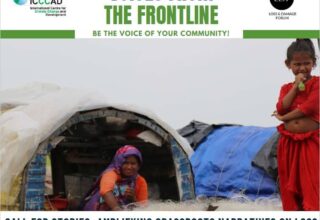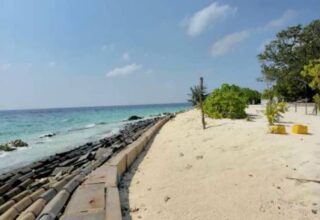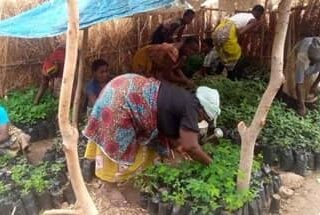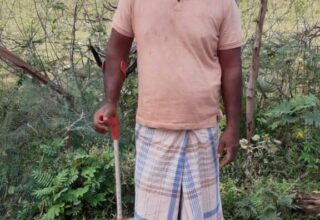In Ahmedabad, India, Mahila Housing Trust works with community members to update their homes to be climate resilient. This is the second of the “Voices from the Frontline (Phase III)” stories by GRP and ICCCAD supported by Irish Aid.
The city of Ahmedabad is located in the western state of Gujarat, India. A bustling metropolitan with a population of 5.5 million people (Census, 2011), the city is highly susceptible to climate variability. It was rated the second most climate vulnerable city in a study conducted by the Indian Ministry of External Affairs in 2021. As recently as 2010, it experienced a devastating heatwave, which killed 1,344 people. The last decade has seen a significant upward trend in temperatures, and the maximum temperatures are projected to increase by 1.2 °C to 2.4 °C in the future. Climate change has also impacted the rainfall pattern, where the rain is highly unpredictable and intense. The seasonal rainfalls are projected to increase by 8 to 17 percent, with a significant increase in the number of rainy days.
Story of Deepika ben Malik
Dipika ben Malik, a mother of three, lives in the slum of Bhagwatinagar. She came to Ahmedabad as a young woman from Bengal, searching for a better life. Her settlement, with approximately 900 households (mostly economic migrants) is in the throes of Ahmedabad’s industrial belt, Odhav. The slum lacks basic facilities such as roads, drains, drinking water, toilets, and transportation facilities (a bus stop). The living conditions in the slums only compounded the problem brought about by excess heat and excess rain, which were a result of climate change. But this is what she could afford with her scarce financial resources. This is what she called ‘’home.’
“I purchased the land for my house by paying 15,000 rupees ($184 USD). Thereafter, I invested 1,000,000 rupees at regular intervals, to build sections of the house, such as rooms and toilet etc.”

Photo :Ramesh Gadhvi, Mahila Housing Trust
Dipikaben was forced to search for work when she wished to educate her children in English, as this proved too far-fetched due to her family’s dire financial condition. She started sewing after learning it from a local seamstress, who gave her lessons for a fee INR 2500 ($30.59 USD).
“I sold my television to buy a sewing machine. My husband opposed the decision, saying their children would be forced to go to other people’s homes to watch television. But I was determined to work and improve our financial position to secure my children’s future.“
She was proud when her family’s financial situation improved steadily in a few months. She was able to send her children to a good English school.
Being a home-based worker, her house is her workplace. But her housing conditions were highly unfavorable to support her work. She had an asbestos sheet as her roof, the housing plinth was lower than the ground level, and she depends on electricity (during day time) to keep the house lit for working.
Dipika ben found it extremely difficult to work during summers and monsoons.During summers, the asbestos roofing trapped in the heat, resulting in higher temperatures in the house compared to outside. The heat impacted her productivity and caused her lose a substantial amount of income. Additionally, she kept her fan switched on all the time, increasing her electricity bill by two times.
“I usually sew three blouses in a day, earning 200 (2.45 USD) rupees per blouse. However, in summers I only earn 400 rupees as I can sew two blouses at max. I avoid working in the afternoons due to the extreme heat. My electricity bill also doubled from 1000 (12.24 USD) rupees a month to 2000 (24.48 USD) rupees a month as I keep the fan running all the time.“
Her situation during the monsoons was even worse. Having a house with a lower plinth than the ground level, alongside an asbestos roof and leaking walls, meant rainwater could easily enter her home. To avoid that, she had to make pre-monsoon preparations in the form of plastic sheets costing 1000 rupees (12.24 USD) each, to cover her roof. She also inserted a tall pipe in her drainage system so that all the water entering her house would directly go to drainage and not flood her house. Thus, she couldn’t work during monsoons as she had to always stay alert regarding the flooding threat. This meant she could not earn an income.
“Once I went out, thinking the weather would be sunny, and it wouldn’t rain. However, the rain started 10 minutes later. My entire house was flooded, as I couldn’t get back in time. All my food material were damaged, my customer’s clothes were ruined and destroyed, and dirt and muck entered my house. Not only did it leave a bad impression on my customers, but it took me 5 hours that day to clean the house. I lost nearly 6000 Rupees (73.43 USD).”
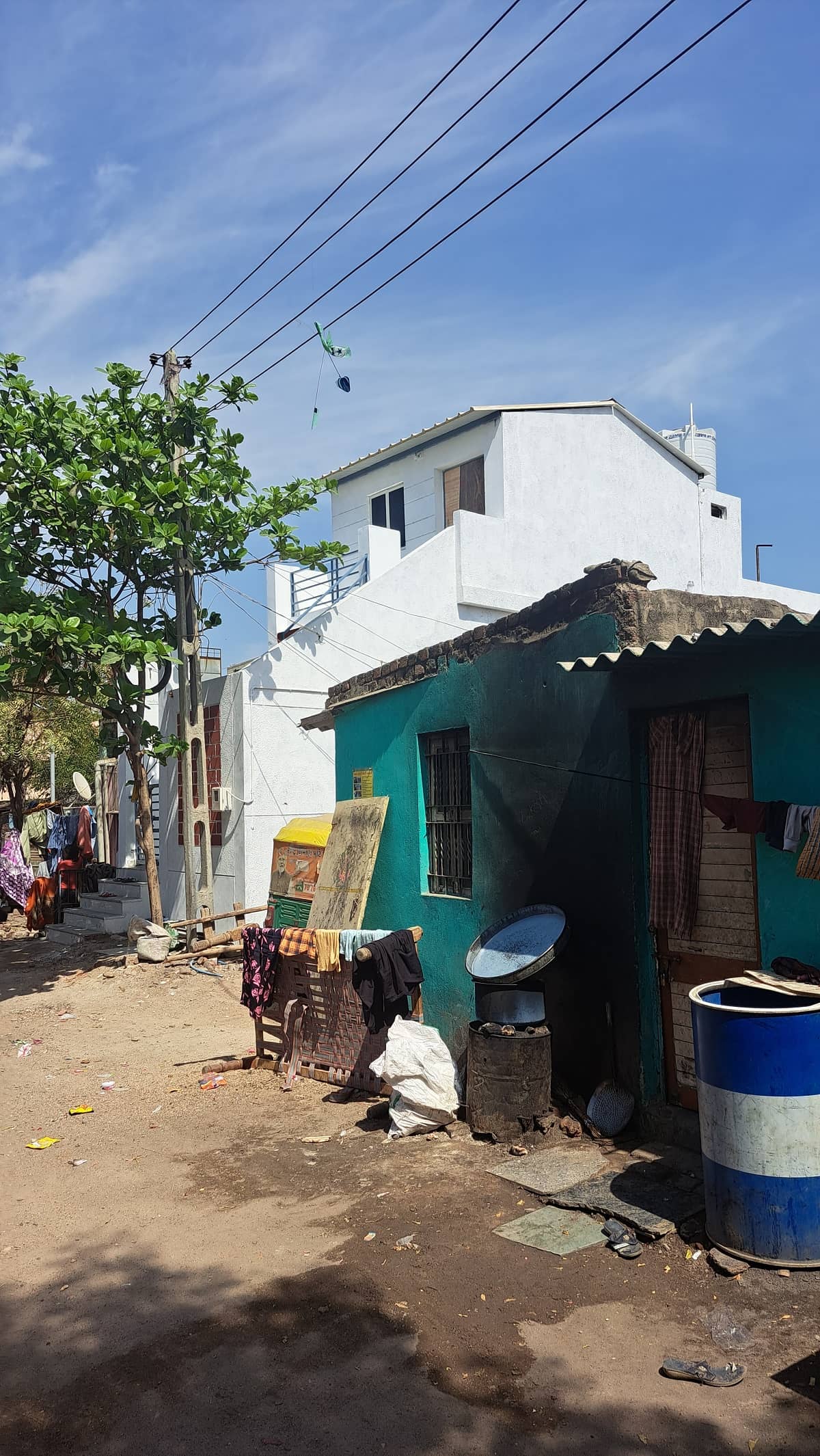
Photo :Ramesh Gadhvi, Mahila Housing Trust
Mahila Housing Trust’s intervention
Mahila Housing Trust (MHT) under its climate mitigation and adaptation portfolio, works extensively with vulnerable communities to provide innovative, end-user driven sustainable built environments.
In Dipika ben’s case, MHT partnered with Selco Foundation to construct a new house. The new house was constructed with the family’s needs and aspirations in mind, along with making it climate resilient.
All the appliances in the house were solarized to reduce electricity bills throughout the year. Her asbestos sheets were replaced with PUF panel roofing, which ensures lower temperatures during summers and no leaks during rainfalls. PUF panels are made of polyurethane which is usually placed between two metal sheets. PUF panels are good heat insulators, as they protect the inner environment from ambient heat and sunlight and can keep the indoors cool. Thus, less energy is used to keep the premises inside the structure cool which can save costs. Similarly, if the temperature outside is low, the PUF panels can retain the heat inside the structure to keep it warm and comfortable inside. PUF panels are an ideal choice for industries and offices. Also, the plinth level of her house was raised to prevent her house from flooding during heavy rainfall. Lastly, the house was made ‘G+1’ (ground floor plus one) to give better living and working space to her and her family.
Climate resilient homes
MHT has worked with vulnerable communities for the past 25 years. Their interventions are made with keeping in mind the needs of the user. The technologies used here, have been replicated in two other houses in the same slum. This intervention will ensure that the vulnerable communities are resilient to climate change, which may only worsen climate impacts in the years to come. In their improved houses, not only will they be able to weather the impacts of climate change, but they will also be able to continue working to sustain their livelihoods.
About the interviewee
Dipika bam Malik is from West Bengal and has lived in the Bhagawatinagar Slum for 25 years. She lives with her two sons and husband. She has a daughter who is married and lives in Ahmedabad. Dipika ben is a seamstress and also sells puffed rice from her home. She is a Community Action Group member and supports her community is accessing basic services. She showed willingness to invest her savings to build a climate resilient house. She moved into her new house on 9 March 2023. The interviewers had a chance to visit her former house and the newly built one. She is an example for others in the community to invest in climate resilient housing.
About the interviewer
Chirayu Brahmbhatt and Rajeswari Namagiri Gorana are from the Mahila Housing Trust. They are working on a Climate Risk Insurance project for Urban Poor on Extreme Heat and Excess Rain. MHT’s mission is to strengthen grassroots collectives of women in the urban informal sector to advance constructive dialogue and action on improving their housing, living, and working environments.
Written by: Chirayu Brahmbhatt and Rajeswari Namagiri Gorana


